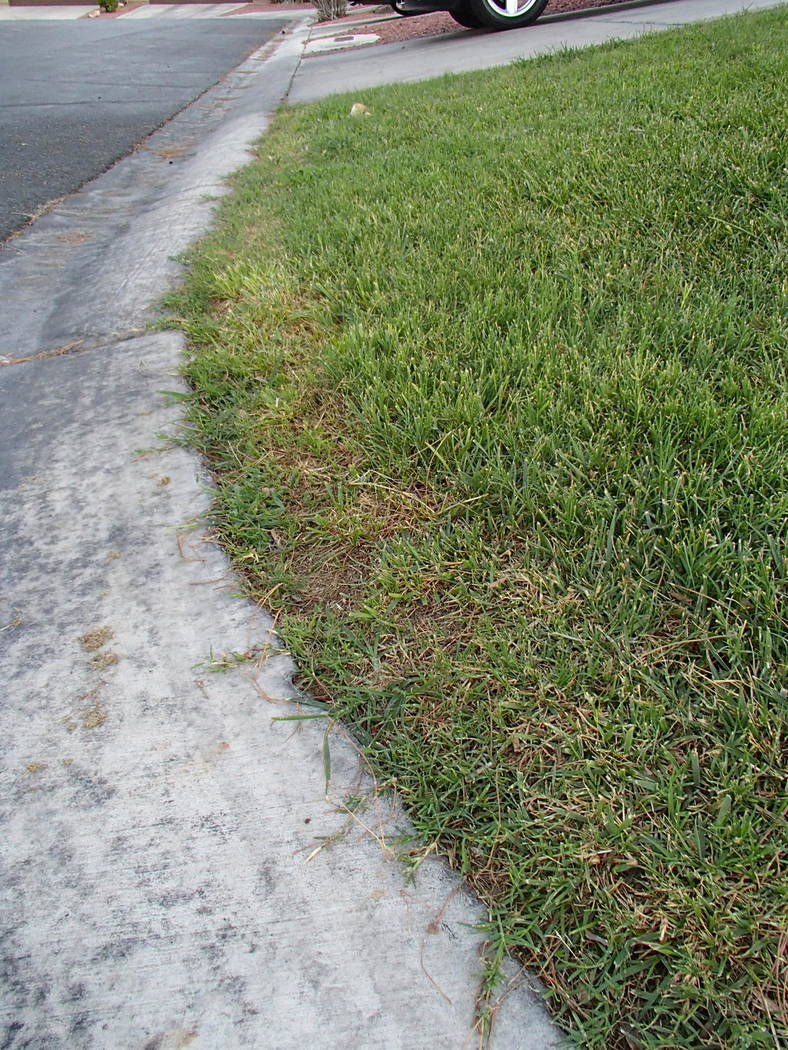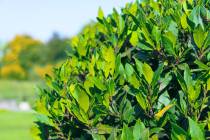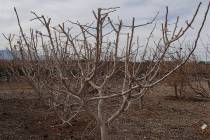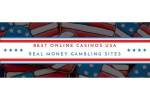No quick fix for old irrigation system at condo community
Q: You emphasized it’s better to water longer rather than more often. But what if that’s not possible? Our small condo community has an old irrigation system with everything watered from the same lines. We irrigate for nearly 24 hours. Less than that and small plants really struggle. Is there anything we can do?
A: Telling you to water longer rather than more often, I am telling you what to strive for and what’s best for the plants, your condo community and your landscape. There is no quick fix to use when irrigating that solves this problem without making major changes to the landscape and irrigation system.
I am very confident your condo community could have an eye-appealing landscape that could save water and energy while not using more than about 2 to 3 feet of water applied to your landscape per year. Lawns use between 6 and 8 feet of water per year, 200 to 400 percent more.
Landscape water use should aim for between 650,000 to 975,000 gallons per acre per year. Some areas of the landscape — where people are active — are more intensively planted and use more water, while other areas use less, but the average should fall between these numbers.
If you are currently using an amount of water that is close to this and happy with how your landscape looks and performs, then do nothing. You are doing a very good job in managing exterior water use.
But if landscape water usage is considerably higher than this, then consider re-landscaping the common areas. This can be done in stages so the upfront cost is manageable.
Most likely the irrigation strategy used now in your condo community is giving landscape plants many small “sips” of water, rather than large gulps. It is not ideal, but if it’s working for you and not cost-effective to make changes, then keep everything the same.
Plant replacements should be planted during the coolest times of the year and not during the heat. Designate someone to water these plants with a hose about every three days after they are planted. After new growth has begun, they can be turned over to the irrigation system.
Seldom are there noticeable problems from watering plants with too much water unless the applications are excessive. Excessive watering causes plants to yellow and die during the heat.
However, problems you might see irrigating daily with tiny sips of water include plant leaves scorching, plants dying back, large trees that blow over in strong winds and excessively high water bills.
Q: My peach tree produces copious amounts of fruit, but they have a bitter taste year after year. What can be done to sweeten the fruit?
A: This is a problem with the variety of peach you selected. Variety names are names like Bonanza dwarf peach, Elberta peach, FlordaPrince peach or MidPride peach. There is nothing you can do to the tree or the soil to improve fruit quality. If you are not happy with the quality of the fruit after three or four seasons, replace the tree.
If yours is a miniature peach such as Bonanza, a genetic dwarf tree, then this could be the root of the problem. Genetic dwarf or miniature peaches were never accepted by the commercial peach industry because of fruit quality.
Some years the quality of the fruit produced is better than other years, but, generally, the fruit quality is subpar when compared to varieties of fruit grown on standard-sized trees such as Elberta or MidPride.
Choose a peach by its varietal name and find out what varieties are good ones for our desert climate. The variety of the peach is extremely important for good fruit quality.
Some of these varieties are marketed as semi-dwarf because of their grafted rootstock. The quality of the fruit is still good regardless of the rootstock, but stick with a reliable varietal name.
Fruit quality varies with variety and climate where it’s grown. Fruit tree varieties that taste delicious in Georgia may not have the same quality when grown in the Mojave Desert. This is also true vice versa.
In hot climates, the usual problem is a lack of flavor because of low acidity, even though the sugar content can be very high. Sugar only tastes sweet. The balance of different acids is what gives a peach flavor. I would replace this tree with a variety that has a history of good flavor in our climate.
Q: I have a hybrid Bermuda grass lawn with weed problems of clover, crabgrass and chickweed. I sprayed the lawn in spring with a liquid weed killer using a garden hose. Weeds loved it. I bought a spreadable product which can’t be applied during temperatures above the 80s. Is there anything that I can do before the fall?
A: Hybrid Bermuda grass, if managed correctly, will have very few weeds if mowed, fertilized and watered correctly. Mowing frequently at the proper height, applying high nitrogen fertilizers every six to eight weeks and watering to keep it “perky” keeps most weeds at bay.
Mowing height depends on the variety of hybrid Bermuda grass. All of them should be mowed below 1 inch, and a few of them grow best when cut at ½ inch or less. Frequent mowing at these heights encourages a thick, horizontal mat of grass that prevents these weeds.
Apply high nitrogen fertilizers every six to eight weeks during its growing season, particularly in the summer months. Reduce the amount of fertilizer applied to the grass to between ½ to ¾ of the recommended rate on the bag. Fertilizing with high nitrogen fertilizers and mowing frequently work well together to prevent weed growth.
Irrigate during the early morning hours before sunup. Make sure to apply enough water to penetrate the soil 12 inches deep. You will be surprised at how many of these weeds will be eliminated through proper mowing, fertilizing and irrigation.
Weed control in Bermuda grass is more effective in the spring and fall when temperatures are cooler. Weeds are more resistant to weed killers when stressed by the heat. Weeds are more susceptible to weed killers during cooler months.
Make sure it is crabgrass and not goosegrass. They look very similar. Crabgrass control begins mid- to the latter part of January. Goosegrass control begins two months later.
Pre-emergent weed killers are applied to the lawn to kill seed as it germinates, so these weed killers must be applied before the seed germinates or you’ll get no control. Follow label directions.
To control clover and chickweed, use a liquid weed killer containing either MCPP, 2,4-D and dicamba OR MCPA, 2,4-D and triclopyr listed as ingredients on the label. Apply it either in combination with a fertilizer and applied with the drop spreader or liquid applied with a compressed air sprayer. Hose-end applicators, in my opinion, do not do a very good job.
Do not apply water for 24 hours after an application. Mix a wetting agent with the spray to help it get inside the leaves. Read and follow label directions.
Q: Can I use burlap for shade cloth?
A: Don’t use burlap in place of shade cloth for vegetables. It is fine for creating shade for people or pets but not for plants. Plants are green and need sunlight for photosynthesis. People and pets don’t need all this sunlight.
Shade cloth comes in different percentages of shade ranging from about 30 to 100 percent. Shade cloth for plants ranges from 20 to about 50 percent shade. Plants that flower and produce fruits, such as tomatoes, peppers and eggplant, grow best under 20 to 40 percent shade. More shade than this interferes with flowering and fruiting.
Plants that only grow leaves and no flowers such as lettuce, spinach, Swiss chard, greens can handle shade up to about 50 percent. After 50 percent shade, they grow poorly. Not enough light.
Most burlap I have seen produces much more shade than this and would not be a good choice when growing plants.
You can make 50 percent shade out of wooden 1-by-2s by laying a solid ceiling of 1-by-2s above the plants and then removing every other one. Similarly, 30 to 40 percent shade can be done the same way but by eliminating two and leaving every third 1-by-2.
Bob Morris is a horticulture expert and professor emeritus for the University of Nevada, Las Vegas. Visit his blog at xtremehorticulture.blogspot.com. Send questions to Extremehort@aol.com.





























